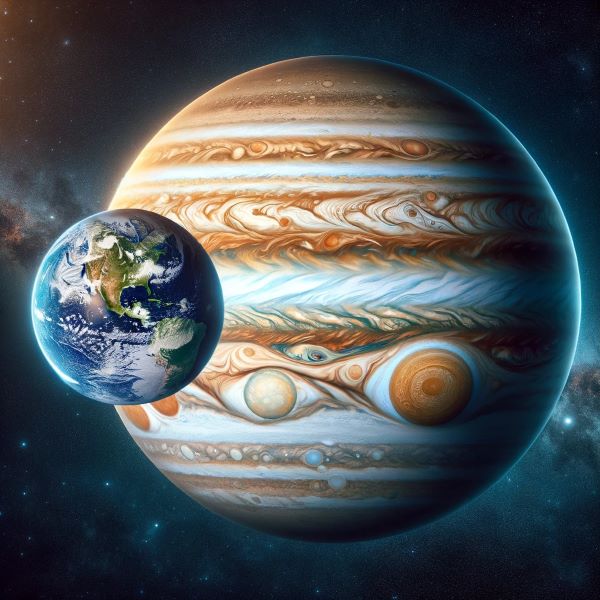How big is Jupiter compared to Earth?
When it comes to the biggest planets, there’s none out there that can match Jupiter for scale. And although the further you go out from the Sun the colder the planets are on the outside, their inner core is extremely hot. This is definitely true for Jupiter, which we know it’s primarily made up of gas. However despite this, just how big is the planet? That’s what we’re going to run through quickly.
How big is Jupiter compared to Earth?
Jupiter has a radius of 43,441 miles, in comparison to the Earth, which has a radius of 3,963 miles. This means that Jupiter is around 11 times the size of our planet, which makes it the largest in the solar system.

And as the largest planet in the solar system, it’s certainly much bigger than all of the terrestrial planets, of which Earth is actually the largest. Next in line is Saturn, which has a radius of 36,183 miles, so it’s not too far off of Jupiter. There’s a big difference between the smaller terrestrial planets and the larger Jovian planets, which in part is due to their proximity to the Sun – it’s much easier for a smaller planet to be with a close distance of the Sun without its orbit being affected.
But eleven times the size of the Earth actually doesn’t sound like that much, which is why we can use other measurements to compare the two together. If we look at the mass of the Earth which is 5.972 × 10^24 kg, and then the mass of Jupiter which is 1.898 × 10^27 kg, we can see just how much more massive Jupiter is – it has 317 times the mass of our planet.
We can also take things one step further and measure the volume of the two planets too. Jupiter has a volume of 1,431,281,810,739,360 cubic kilometers, whilst Earth has a volume of around 1 trillion cubic kilometers. This means that you could fit more than 1300 planet Earths in Jupiter which space left to spare. Here, you can see more amazing facts about Jupiter – but for now, let’s look at just how big the planet it.
The equator of Jupiter
If you were to walk around the entire equator of Jupiter, you’d have to travel more than 272,946 miles to make it all the way round, which is a little more than 10x what you’d have to walk if you were travelling around the Earth.
Now, obviously this is all completely theoretical as there’s no way that we could actually walk across the equator of the planet. First, there’s a very thick atmosphere that surrounds Jupiter, which is a blend of hydrogen and helium.
But even beneath this, most of the planet is actually made of gas (hydrogen). This means that you wouldn’t obviously be able to walk along it, as actually it’d have more of a consistency similar to clouds on our own planet.
If we go deep beneath the atmosphere that surrounds the planet then you would find a solid core right at its center, and actually, this would still be much bigger than the Earth. Its core is estimated to be around 15 times the size of our own planet, and is likely at a temperature of more than 35,000°c too.
Still though, in total the core of Jupiter actually only makes up around 5% of its overall mass, with the large majority of it being gas.
The Wrap Up
To sum it up, even though the Earth isn’t one of the smaller planets in the solar system, it still pales in comparison to the Jovian planets; none more so than Jupiter, which is eleven times as large as our planet. However, most of the planet is actually made up of gas, so it’s not exactly like it’s a massive planet made of complete solids, though it is still impressive to look at through a telescope.